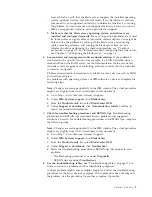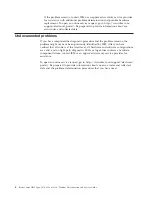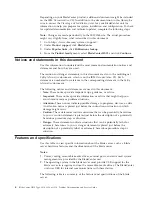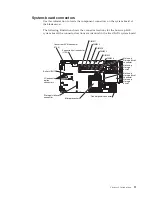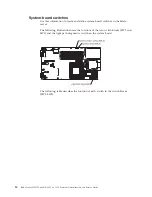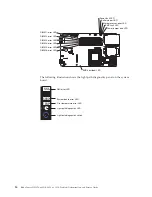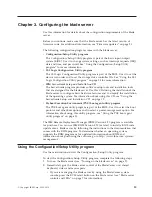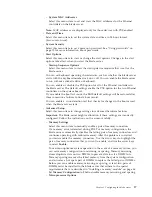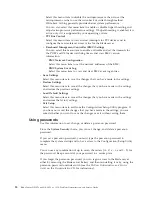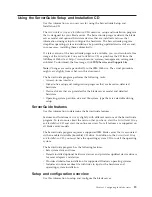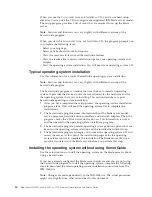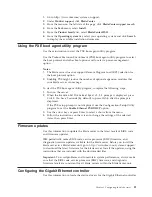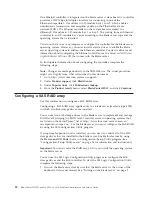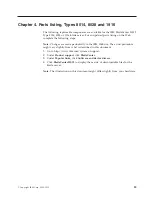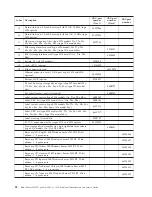
–
System MAC Addresses
Select this menu item to set and view the MAC addresses for the Ethernet
controllers on the blade server.
Note:
MAC addresses are displayed only for those devices with PXE enabled
v
Date and Time
Select this menu item to set the system date and time, in 24-hour format
(
hour
:
minute
:
second
).
v
System Security
Select this menu item to set a power-on password. See “Using passwords” on
page 18 for more information about passwords.
v
Start Options
Select this menu item to view or change the start options. Changes in the start
options take effect when you start the blade server.
–
Startup Sequence Options
Select this menu item to view the startup device sequence that is set for the
blade server.
You can set keyboard operating characteristics, such as whether the blade server
starts with the keyboard number lock on or off. You can enable the blade server
to run without a diskette drive or keyboard.
You can enable or disable the PXE option for all of the Ethernet controllers in
the blade server. The default settings enable the PXE option for the two Ethernet
controllers on the system board.
If you enable the boot fail count, the BIOS default settings will be restored after
three consecutive failures to find a boot record.
You can enable a virus-detection test that checks for changes in the boot record
when the blade server starts.
v
Advanced Setup
Select this menu item to change settings for advanced hardware features.
Important:
The blade server might malfunction if these settings are incorrectly
configured. Follow the instructions on the screen carefully.
–
Memory Settings
Select this menu item to manually enable a pair of memory connectors.
If a memory error is detected during POST or memory configuration, the
blade server automatically disables the failing pair of memory connectors and
continues operating with reduced memory. After the problem is corrected,
you must enable the memory connectors. Use the arrow keys to highlight the
pair of memory connectors that you want to enable, and use the arrow keys
to select
Enable
.
To maintain optimum system operation in the event of a memory failure, you
can set memory configuration to mirroring or sparing. Memory mirroring
stores duplicate data on two DIMMs to prevent data loss if a DIMM fails.
Memory sparing removes the failed memory from the system configuration
and activates a hot spare pair of DIMMs to replace the failed pair of DIMMs.
Before you can enable memory mirroring or sparing, at least two pairs of
DIMMs must be installed in the blade server that adhere to the special
requirements that are described in “Installing a memory module” on page 46.
Set
Memory Configuration
to
Flat
to disable memory mirroring and sparing.
–
Microprocessor Options
Chapter 3. Configuring the blade server
17
Summary of Contents for BladeCenter HS12 Type 1916
Page 1: ...BladeCenter HS12 Type 8014 8028 or 1916 Problem Determination and Service Guide...
Page 2: ......
Page 3: ...BladeCenter HS12 Type 8014 8028 or 1916 Problem Determination and Service Guide...
Page 36: ...24 BladeCenter HS12 Type 8014 8028 or 1916 Problem Determination and Service Guide...
Page 186: ...174 BladeCenter HS12 Type 8014 8028 or 1916 Problem Determination and Service Guide...
Page 190: ...178 BladeCenter HS12 Type 8014 8028 or 1916 Problem Determination and Service Guide...
Page 198: ...186 BladeCenter HS12 Type 8014 8028 or 1916 Problem Determination and Service Guide...
Page 203: ......
Page 204: ...Part Number 60Y1601 Printed in USA 1P P N 60Y1601...

